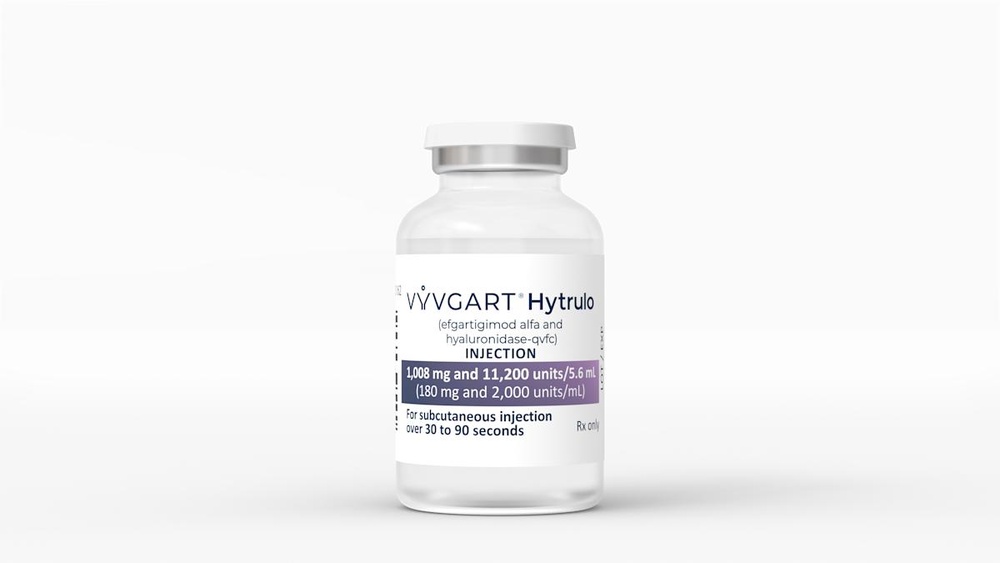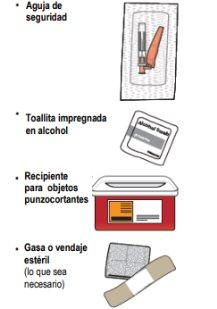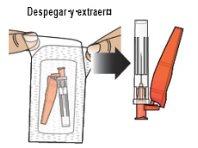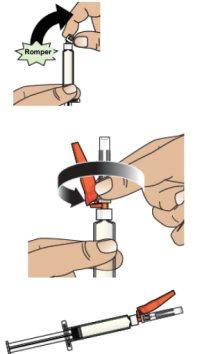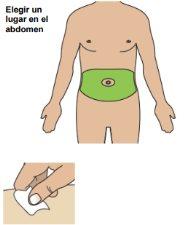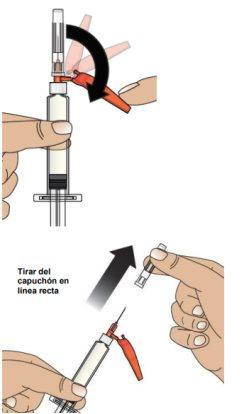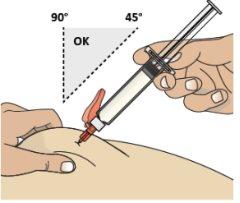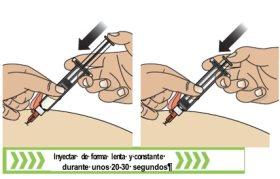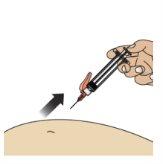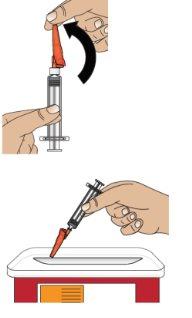
How to use VYVGART 1000 mg Injectable Solution in Pre-filled Syringe
Introduction
Package Leaflet: Information for the Patient
Vyvgart 1,000 mg solution for injection in a pre-filled syringe
efgartigimod alfa
This medicinal product is subject to additional monitoring, which will allow for quick identification of new safety information. You can help by reporting any side effects you may get. The last section of the leaflet contains information on how to report side effects.
Read all of this leaflet carefully before you start using this medicine because it contains important information for you.
- Keep this leaflet, you may need to read it again.
- If you have any further questions, ask your doctor, pharmacist, or nurse.
- This medicine has been prescribed for you only. Do not pass it on to others. It may harm them, even if their signs of illness are the same as yours.
- If you get any side effects, talk to your doctor, pharmacist, or nurse. This includes any possible side effects not listed in this leaflet. See section 4.
Contents of the pack
- What is Vyvgart and what is it used for
- What you need to know before you use Vyvgart
- How to use Vyvgart
- Possible side effects
- Storage of Vyvgart
- Contents of the pack and further information
1. What is Vyvgart and what is it used for
What is Vyvgart
Vyvgart contains the active substance efgartigimod alfa. Efgartigimod alfa binds to a protein in the body called the neonatal Fc receptor (FcRn) and blocks it. By blocking FcRn, efgartigimod alfa reduces the level of autoantibodies against immunoglobulin G (IgG), which are proteins of the immune system that mistakenly attack parts of a person's body.
What is Vyvgart used for
Vyvgart is used together with the reference treatment to treat adults with generalized myasthenia gravis (gMG), an autoimmune disease that causes muscle weakness. gMG can affect several muscle groups throughout the body. The disease can also cause shortness of breath, extreme fatigue, and difficulty swallowing.
In patients with gMG, autoantibodies against IgG attack and damage proteins in the nerves called acetylcholine receptors. As a result of this damage, the nerves are unable to contract the muscles normally, which causes muscle weakness and difficulty moving. By binding to the FcRn protein and reducing autoantibody levels, Vyvgart can improve muscle contraction and reduce disease symptoms and their impact on daily activities.
2. What you need to know before you use Vyvgart
Do not use Vyvgart
- if you are allergic to efgartigimod alfa or any of the other ingredients of this medicine (listed in section 6).
Warnings and precautions
Consult your doctor before starting treatment with Vyvgart.
MGFA Class V
Your doctor cannot prescribe this medicine for you if you are connected to a ventilator due to muscle weakness caused by gMG (myasthenic crisis).
Infections
Treatment with Vyvgart may reduce your natural resistance to infections, so you should inform your doctor if you have any infection before starting treatment with Vyvgart.
Injection site reactions and allergic reactions
Vyvgart contains a protein that can cause reactions such as rash or itching in some people. Vyvgart can cause an anaphylactic reaction (severe allergic reaction). If you experience allergic reactions such as swelling of the face, lips, throat, or tongue that makes swallowing or breathing difficult, shortness of breath, feeling of loss of consciousness, or skin rash during or after injection, inform your doctor immediately.
Vaccinations
Inform your doctor if you have been given any vaccine in the last 4 weeks or if you are planning to be vaccinated in the near future.
Children and adolescents
Do not give this medicine to children under 18 years of age, as the safety and efficacy of Vyvgart in this population have not been established.
Elderly patients
No special precautions are necessary for the treatment of patients over 65 years of age.
Other medicines and Vyvgart
Inform your doctor if you are using, have recently used, or might use any other medicines.
Pregnancy, breastfeeding, and fertility
If you are pregnant or breastfeeding, think you may be pregnant, or are planning to have a baby, ask your doctor or pharmacist for advice before taking this medicine.
Driving and using machines
Vyvgart is not expected to affect your ability to drive or use machines.
Vyvgart contains sodium
This medicine contains less than 1 mmol of sodium (23 mg) per syringe, which is essentially "sodium-free".
Vyvgart contains polysorbate
This medicine contains 2.1 mg of polysorbate 80 per syringe, equivalent to 0.4 mg/ml. Polysorbates can cause allergic reactions. Inform your doctor if you have any known allergy.
3. How to use Vyvgart
Follow exactly the administration instructions of this medicine given by your doctor or pharmacist. If you are unsure, consult your doctor or pharmacist again.
What dose of Vyvgart you will receive and how often
The recommended dose is 1,000 mg administered in cycles of one injection per week for 4 weeks. Your doctor will decide when more treatment cycles are needed.
If you are already being treated with Vyvgart intravenously and want to switch to Vyvgart subcutaneously, you should receive the subcutaneous injection instead of your intravenous infusion at the start of the next treatment cycle.
Vyvgart injection
Vyvgart is administered via an injection under the skin (subcutaneously). You and your doctor should decide if, after adequate training, you or your caregiver can inject Vyvgart. The first self-injection should be performed in front of your healthcare professional. It is important that you do not attempt to inject Vyvgart before receiving training from a healthcare professional.
If you or your caregiver inject Vyvgart, you or your caregiver should carefully read and follow the administration instructions at the end of this leaflet (see "Important administration instructions"). Talk to your doctor, pharmacist, or nurse if you have any questions about how to administer an injection.
If you use more Vyvgart than you should
Since Vyvgart is administered in a single-use pre-filled syringe, it is unlikely that you will receive too much. However, if you are concerned, contact your doctor, pharmacist, or nurse for advice.
If you miss or forget a Vyvgart injection
Keep a record of your next dose. It is important that you use Vyvgart exactly as prescribed by your doctor.
- If you forgot to take your dose within 3 days of the date you should have taken it, take your dose as soon as you remember and then continue with your original dosing schedule.
- If you forgot to take your dose for more than 3 days, ask your doctor when you should take your next dose.
- If you miss an appointment, contact your doctor immediately for advice.
Do not take a double dose to make up for forgotten doses.
If you stop using Vyvgart
Stopping or interrupting treatment with Vyvgart may cause your gMG symptoms to return. Consult your doctor before stopping treatment with Vyvgart. Your doctor will explain the possible side effects and risks. Your doctor will also want to closely monitor you.
If you have any further questions on the use of this medicine, ask your doctor, pharmacist, or nurse.
4. Possible side effects
Like all medicines, this medicine can cause side effects, although not everybody gets them.
Your doctor will explain the possible side effects and risks and benefits of Vyvgart before treatment.
Tell your doctor immediately if you notice:
Signs of a severe allergic reaction (anaphylactic reaction) such as swelling of the face, lips, throat, or tongue that makes swallowing or breathing difficult, shortness of breath, feeling of loss of consciousness, or skin rash during or after injection.
If you are not sure what the following side effects are, ask your doctor to explain them to you.
Very common(may affect more than 1 in 10 people)
- infections of the nose and throat (upper respiratory tract)
- injection site reactions, which can include redness, itching, pain. These injection site reactions are usually mild to moderate and usually occur 1 day after injection.
Common(may affect up to 1 in 10 people)
- pain or burning sensation when urinating, which can be a sign of urinary tract infection
- inflammation of the airways in the lungs (bronchitis)
- muscle pain (myalgia)
- nausea.
Frequency not known(cannot be estimated from the available data)
- allergic reactions during or after injection.
- swelling of the face, lips, throat, or tongue that makes swallowing or breathing difficult, shortness of breath.
- pale skin, weak and rapid pulse, or feeling of loss of consciousness.
- sudden rash, itching, or hives.
Reporting of side effects
If you experience any side effects, talk to your doctor, pharmacist, or nurse. This includes any possible side effects not listed in this leaflet. You can also report side effects directly through the national reporting system listed in Appendix V. By reporting side effects, you can help provide more information on the safety of this medicine.
5. Storage of Vyvgart
Keep this medicine out of the sight and reach of children.
Do not use this medicine after the expiry date which is stated on the carton and on the label after "EXP". The expiry date is the last day of the month stated.
Store in a refrigerator (between 2°C and 8°C). Do not freeze.
You can also store the pre-filled syringe at room temperature (up to 30°C) in the original carton for a single period of up to 1 month after removal from the refrigerator. Discard it if it has not been used within 1 month or if it has reached its expiry date, whichever comes first.
Store in the original package to protect from light.
Do not use this medicine if you notice particles.
Medicines should not be disposed of via wastewater or household waste. Ask your pharmacist how to dispose of medicines no longer required. This will help protect the environment.
6. Contents of the pack and additional information
Vyvgart Composition
- The active substance is efgartigimod alfa. Each pre-filled syringe contains 1000 mg of efgartigimod alfa in 5.0 ml. Each ml contains 200 mg of efgartigimod alfa.
- The other ingredients are: recombinant human hyaluronidase (rHuPH20), L-arginine hydrochloride, L-histidine, L-histidine monohydrochloride, L-methionine, polysorbate 80 (E433), sodium chloride, sucrose, water for injectable preparations. See section 2 "Vyvgart contains sodium".
Appearance and pack contents of the product
Vyvgart is a ready-to-use, slightly yellow, clear to slightly turbid solution, presented as a subcutaneous injectable solution in a pre-filled syringe.
Marketing authorisation holder and manufacturer
argenx BV
Industriepark-Zwijnaarde 7
9052 Gent
Belgium
You can request more information about this medicine by contacting the local representative of the marketing authorisation holder:
België/Belgique/Belgien argenx BV Tel: +32 (0) 93969394/+32 (0) 800 54477 | Lietuva argenx BV Tel: 8 800 80 052 |
| Luxembourg/Luxemburg argenx BV Tel: 800 25 233 |
Ceská republika argenx BV Tel: 800 040 854 | Magyarország argenx BV Tel.: (80) 088 578 |
Danmark argenx BV Tlf.: 80 25 41 88 | Malta argenx BV Tel: 8006 5101 |
Deutschland argenx Germany GmbH Tel: 08001803963 | Nederland argenx BV Tel: 0800 0232882 |
Ελλáδα Medison Pharma Greece Single Member Societe Anonyme Τηλ: +30 210 0100 188 | Norge argenx BV Tlf: 800 62 225 |
España argenx Spain S.L. Tel: 900 876 188 | Österreich argenx BV Tel: 0800 017936 |
France argenx France SAS Tél: +33 (0) 188898992 | Polska argenx BV Tel.: 800 005 155 |
Hrvatska argenx BV Tel: 0800 806 524 | Portugal argenx Spain S.L. Sucursal Em Portugal Tel: 800 180 844 |
Ireland argenx BV Tel: 1800 851 868 | România argenx BV Tel: 0800 360 912 |
Ísland argenx BV Sími: 800 4422 | Slovenija argenx BV Tel: 080 688955 |
Italia argenx Italia s.r.l Tel: 800729052 | Slovenská republika argenx BV Tel: 0800 002 646 |
Κúπρος argenx BV Τηλ: 80 077122 | Suomi/Finland argenx BV Puh/Tel: 0800 412838 |
Latvija argenx BV Tel: 80 205 267 | Sverige argenx BV Tel: 020-12 74 56 |
Date of last revision of this leaflet:
Other sources of information
Detailed information on this medicine is available on the European Medicines Agency website: https://www.ema.europa.eu. There are also links to other websites on rare diseases and orphan medicines.
Important instructions for use
Vyvgart 1000 mg solution for injection in pre-filled syringe
efgartigimod alfa
Subcutaneous use
In order to improve the traceability of biological medicinal products, the name and batch number of the administered product should be clearly recorded.
Read and understand these instructions for use before administering the Vyvgart injection.
If you or your caregiver are willing to administer Vyvgart, your healthcare professional will instruct you on how to inject it. Your healthcare professional should teach you or your caregiver how to prepare and administer the Vyvgart injection correctly before using it for the first time. A demonstration of adequate self-administration under the supervision of a healthcare professional is required. It is essential that you do not attempt to inject the medicine until you have received training and you or your caregiver are confident that you know how to use Vyvgart. Ask your healthcare professional if you have any questions.
Important information to know before administering a subcutaneous injection of Vyvgart
- For subcutaneous use only.
- The pre-filled syringe is for single use and cannot be reused.
- Do notuse the pre-filled syringe if it has been at room temperature for more than 1 month.
- Do notuse the pre-filled syringe if it has exceeded the expiry date.
- Do notuse the pre-filled syringe if it is cracked, broken, or damaged, or if the cap is missing. Notify and return damaged pre-filled syringes to the pharmacy.
- Do notuse the pre-filled syringe if the medicine appears discolored or contains particles. The medicine should be colorless or pale yellow. A slight turbidity is normal.
- Do notshake the pre-filled syringe.
Storage of Vyvgart pre-filled syringe
- Store in a refrigerator (between 2 °C and 8 °C).
- Do notfreeze.
- You can also store the pre-filled syringe at room temperature in the original carton for up to 30 °C for a single period of up to 1 month after removal from the refrigerator. Discard it if it has not been used within the 1-month period or by the expiry date, whichever comes first.
- Store in the original packaging to protect it from light.
- Keep this medicine out of the sight and reach of children.
Parts of the pre-filled syringe
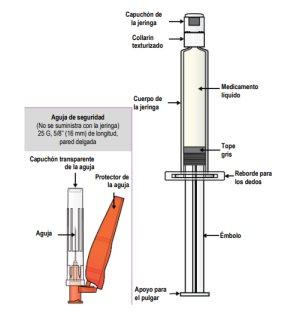
Preparation and checking of materials
1. Remove the carton from the refrigerator 1.1Remove the carton of the pre-filled syringe from the refrigerator. 1.2Remove a pre-filled syringe from the carton and put the rest back in the refrigerator for later use. 1.3Remove the pre-filled syringe from the tray. | ||||
2.1Check the expiry date on the pre-filled syringe.
2.2Check the condition of the pre-filled syringe and its cap.
2.3Check the appearance of the medicine in the pre-filled syringe. The medicine should be colorless or pale yellow. A slight turbidity is normal.
|
|
Preparation for injection
Place the pre-filled syringe on a flat and clean surface and let it rest for at least 30 minutes to reach room temperature.
|
| ||
4.1Prepare the following materials, which are not provided with the pre-filled syringe 4.2Wash your hands with water and soap. |
| ||
5.1Carefully open the package and remove the needle. Discard the package in the household trash. |
| ||
5.2Bend the cap of the pre-filled syringe to one side to remove it and pull it off the pre-filled syringe. Discard the cap in the household trash and place the pre-filled syringe on a clean and flat surface.
5.3Hold the pre-filled syringe with one hand and attach the needle to the pre-filled syringe by turning it (clockwise/right) until you feel resistance. The needle is now attached to the pre-filled syringe. |
| ||
6.1Choose an injection site on the abdomen (stomach area) that is at least 5 cm from the navel. Change the injection site for each injection.
6.2Clean the chosen injection site with an alcohol swab and let it air dry.
|
|
Vyvgart injection
the needle cap 7.1Pull the needle protector back. Note:The needle protector will be used after the injection to cover the needle and avoid pricking yourself with it. 7.2Hold the body of the pre-filled syringe and remove the transparent needle cap by pulling it straight until the needle is exposed. Discard the needle cap in the household trash.
|
| |
8.1Pinch the cleaned injection site. Without releasing the pinch, insert the needle into the pinched skin at an angle of 45 to 90 degrees. Then release the pinched skin.
|
| |
8.2Slowly push the plunger all the way down to inject the medicine. It should take about 20-30 seconds to inject all the medicine. You will feel resistance while pressing. If you feel any discomfort, inject more slowly. It is okay to pause or change your grip during the injection.
8.3Once all the liquid medicine has been injected, remove the needle from the skin by pulling it out at the same angle. |
|
Disposal of the used syringe
9. Cover the needle and dispose of it 9.1Carefully press the needle protector onto the needle until it clicks and covers the needle. This helps to avoid pricking yourself with the needle.
9.2Discard the used syringe with the attached needle into the sharps container immediately after use.
If you do nothave a sharps container, you can use any container if it:
Dispose of the full container according to the instructions of your doctor, nurse, or pharmacist. |
| ||
If a little blood or liquid appears at the injection site, press with a gauze until the bleeding stops. If necessary, you can apply a bandage. |
|
- Country of registration
- Active substance
- Prescription requiredYes
- Manufacturer
- This information is for reference only and does not constitute medical advice. Always consult a licensed doctor before taking any medication. Oladoctor is not responsible for medical decisions based on this content.
- Alternatives to VYVGART 1000 mg Injectable Solution in Pre-filled SyringeDosage form: INJECTABLE, 1000 mgActive substance: efgartigimod alfaManufacturer: Argenx B.V.Prescription requiredDosage form: INJECTABLE PERFUSION, 20 mg/mlActive substance: efgartigimod alfaManufacturer: Argenx B.V.Prescription requiredDosage form: TABLET, 180 mgActive substance: mycophenolic acidManufacturer: Laboratorio Stada S.L.Prescription required
Alternatives to VYVGART 1000 mg Injectable Solution in Pre-filled Syringe in other countries
The best alternatives with the same active ingredient and therapeutic effect.
Alternative to VYVGART 1000 mg Injectable Solution in Pre-filled Syringe in Польща
Online doctors for VYVGART 1000 mg Injectable Solution in Pre-filled Syringe
Discuss dosage, side effects, interactions, contraindications, and prescription renewal for VYVGART 1000 mg Injectable Solution in Pre-filled Syringe – subject to medical assessment and local rules.



